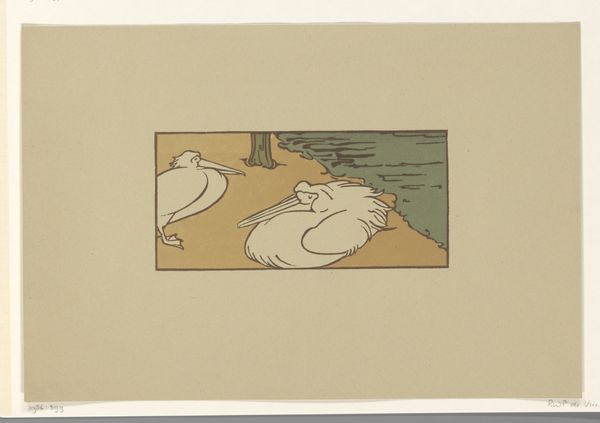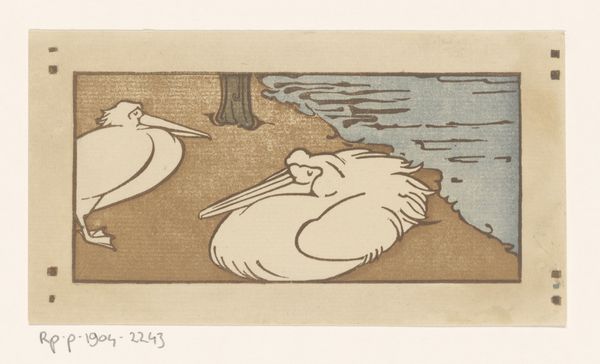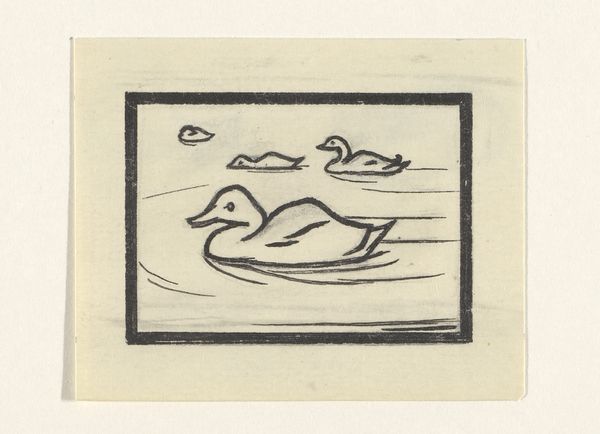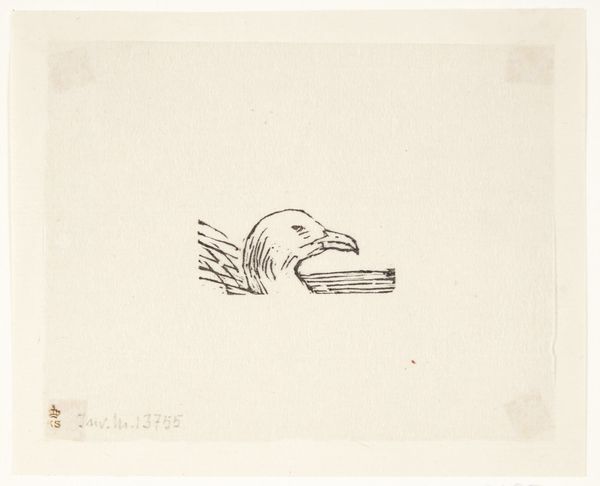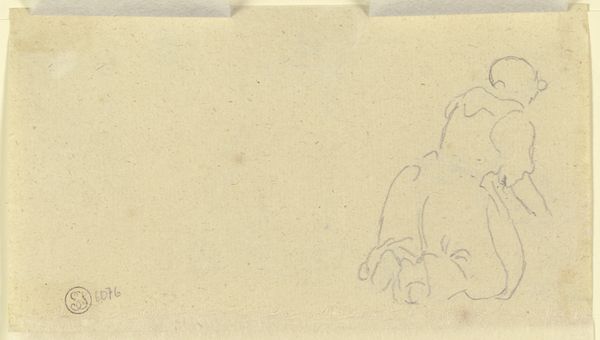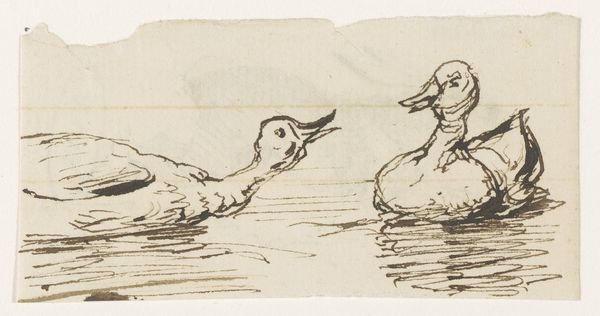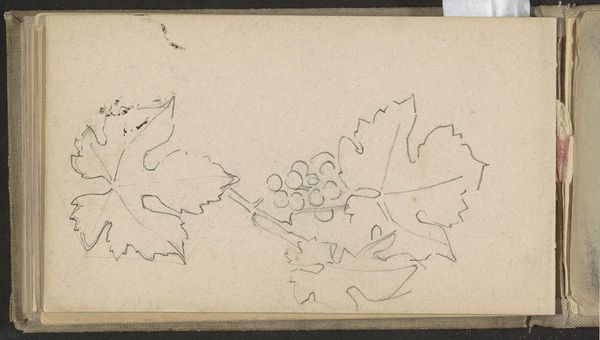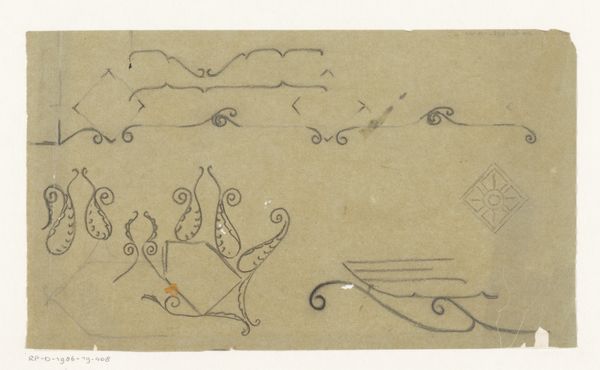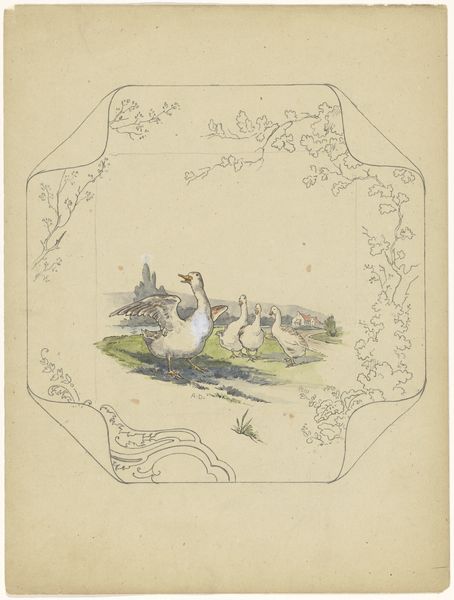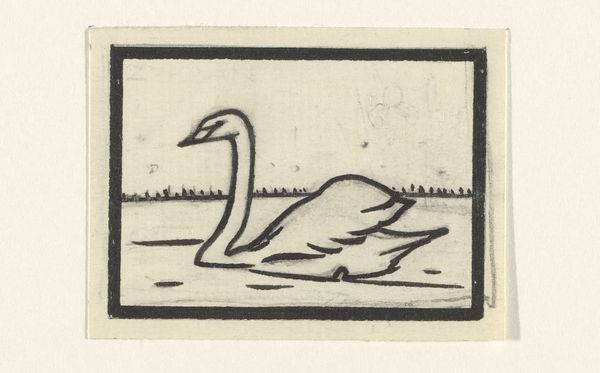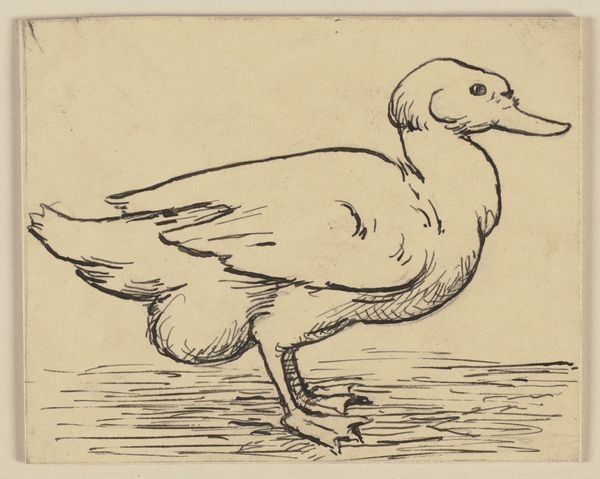
drawing, watercolor, ink
#
drawing
#
art-nouveau
#
blue ink drawing
#
landscape
#
figuration
#
watercolor
#
ink
#
watercolour illustration
Dimensions: height 140 mm, width 221 mm
Copyright: Rijks Museum: Open Domain
Editor: This is Reinier Willem Petrus de Vries’s “Twee pelikanen aan de waterkant,” made sometime between 1884 and 1904, using ink and watercolor. There’s a stillness to the image. What sociopolitical elements from the period might have influenced the artist to depict these birds in such a manner? Curator: Good eye. Its creation at the cusp of the 20th century, amidst rising industrialization and urbanization, offers a starting point. The aesthetic movement, and particularly Art Nouveau which it resembles, sought refuge in nature. How might depicting these pelicans by the water serve as a quiet commentary on the encroachment of modernity upon the natural world? Editor: So, by depicting the birds calmly by the water, he is making an anti-industry statement. Curator: Perhaps not overtly, but art operates within networks of meaning and value. What did it *mean* to choose such a subject and style *then*? These artistic choices were understood differently by different groups in society. Also, consider where this artwork might have been displayed at the time. Was it in a public museum, a private gallery, or someone’s home? Each venue implies a different audience and social function. Editor: Interesting. Was the intent political? It's something for which to keep an eye out when seeing art in museums. Is there more than just what's on the surface? Curator: Precisely. The public role of art constantly evolves with shifting political and social forces. We shape art and art shapes us. Editor: I hadn’t thought about the museum itself as a political space shaping how we see art. This helps me appreciate the painting within a much broader context. Curator: Likewise. I find our conversations as equally elucidating!
Comments
No comments
Be the first to comment and join the conversation on the ultimate creative platform.
